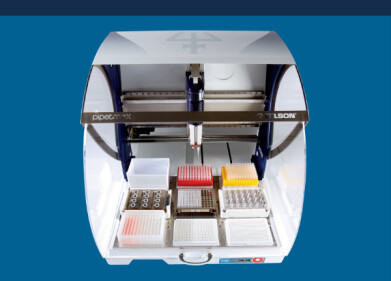Laboratory Products
What is COVID-19's 'Clutch'?
Oct 21 2020
Using RNA-targeting compounds, a team of scientists from the from the Scripps Research Institute has successfully disabled the replication engine of the SARS-CoV-2. Co-lead researcher Matthew Disney says the RNA-binding compounds actively break the clutch of the virus and could curb the spread of the virus. The proof-of-concept study is an exciting leap forward for COVID-19 research, with scientists racing to find an effective treatment for the disease which has infected more than 40 million people worldwide and claimed over one million lives.
“Our concept was to develop lead medicines capable of breaking COVID-19's clutch,” says Disney, a chemist at the Scripps Research Institute. “It doesn't allow the shifting of gears.”
Disabling the clutch to prevent replication
Working with a team of colleagues, Disney engineered drug-like compounds that attack the “clutch” of the virus. By disabling the clutch-like element, the compounds prevent the virus from shifting gears and transcribing single RNA strings into multiple proteins. This stops the virus from replicating after invading cells and in theory, has the potential to eliminate the virus altogether.
Titled ‘Targeting the SARS-CoV-2 RNA Genome with Small Molecule Binders and Ribonuclease Targeting Chimera (RIBOTAC) Degraders’, the study was published in the journal ACS Central Science. Disney asserts that while the findings are promising, there’s still plenty of work and research to be done before the RNA-targeting compounds can be approved as a treatment for COVID-19.
“This is a proof-of-concept study," Disney says. "We put the frameshifting element into cells and showed that our compound binds the element and degrades it. The next step will be to do this with the whole COVID virus, and then optimise the compound.”
Targeting “druggable elements in RNA”
As well as SARS-CoV-2, researchers are using the findings to develop treatments for other infectious diseases and viruses. “By coupling our predictive modelling approaches to the tools and technologies developed in the Disney lab, we can rapidly discover druggable elements in RNA," says Walter Moss, an Assistant Professor at Iowa State University who assisted in the research. “We're using these tools not only to accelerate progress toward treatments for COVID-19, but a host of other diseases, as well.”
Moving forward, the team hope to advance the research to clinical trials and promote the RNA genome as a vulnerable target for COVID-19 treatments. “We have encountered many sceptics who thought one cannot target any RNA with a small molecule," says Disney. "This is another example that we hope puts RNA at the forefront of modern medicinal science as a drug target."
Want to know more about the advanced instruments and techniques used in state-of-the-art laboratories? ‘UV-Vis: 5 steps to Pharmacopoeia compliance’ outlines the basic steps required to meet industry guidelines.
Digital Edition
ILM 49.5 July
July 2024
Chromatography Articles - Understanding PFAS: Analysis and Implications Mass Spectrometry & Spectroscopy Articles - MS detection of Alzheimer’s blood-based biomarkers LIMS - Essent...
View all digital editions
Events
ACS National Meeting - Fall 2024
Aug 18 2024 Denver, CO, USA
Aug 25 2024 Copenhagen, Denmark
Aug 28 2024 Phnom Penh, Cambodia
Sep 04 2024 Chiba, Tokyo, Japan
Sep 04 2024 University of Warwick, Coventry, UK





24_06.jpg)












